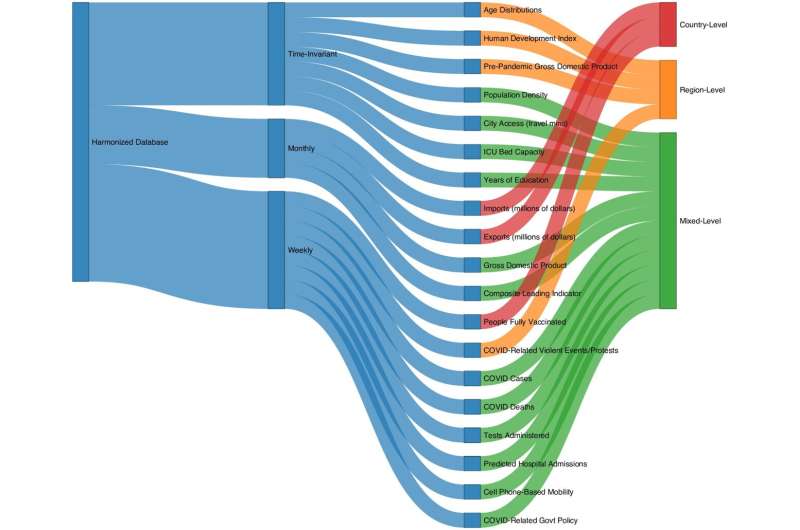
A new paper by a team at Los Alamos National Laboratory is giving researchers new insight into how countries respond to systemic shocks such as the COVID-19 pandemic.
“This is one of the first papers to quantify resiliency using a data-driven approach, since most of the existing approaches rely on subject-matter expertise,” said Sara Del Valle, of the Laboratory’s Information Systems and Modeling group and author on the paper, which published today in PLOS One.
“We compared expert informed resiliency published prior to the pandemic, and our approach conducted during the pandemic, and we found significant discrepancies between what experts had predicted would be the most resilient countries if struck with a pandemic.”
Previous attempts to quantify the impact of COVID-19 mostly looked only at the pandemic in a single dimension, such as gross domestic product or a country’s unemployment rate. The Los Alamos team took a more holistic approach, exploring resilience across a variety of social, economic and political domains in several countries, including the United States, Brazil, India, Sweden, New Zealand and Israel.
“We found that citizens in these countries responded quite differently to stringent COVID policies,” Del Valle said. “For example, we saw stricter governmental pandemic policy was associated with higher political unrest across states within the U.S., while the opposite was true for states in Brazil.”
The team assessed how observed responses and outcomes of the COVID-19 pandemic were associated with pre-pandemic characteristics or vulnerabilities and the systems in place prior to the pandemic that may have impacted the ability to respond to the crisis.
Education, for example, played an important role in pandemic response.
Even after adjusting for strictness of governmental COVID policies, the team found that higher education was significantly associated with lower amounts of political unrest across the United States. Diversity in responses even within countries showed the potential for regional differences to impact pandemic response.
The most pandemic-impacted sectors also differed across countries. Human health, public administration and defense were strongly impacted in the U.S. and Sweden, while manufacturing was strongly impacted in Brazil and India. The construction sector was moderately or strongly impacted across all countries.
“Understanding the differences in countries’ abilities to respond after a pandemic can help society be better prepared for future pandemics,” Del Valle said.
More information:
Lauren J. Beesley et al, Multi-dimensional resilience: A quantitative exploration of disease outcomes and economic, political, and social resilience to the COVID-19 pandemic in six countries, PLOS ONE (2023). DOI: 10.1371/journal.pone.0279894
Journal information:
PLoS ONE
Source: Read Full Article


